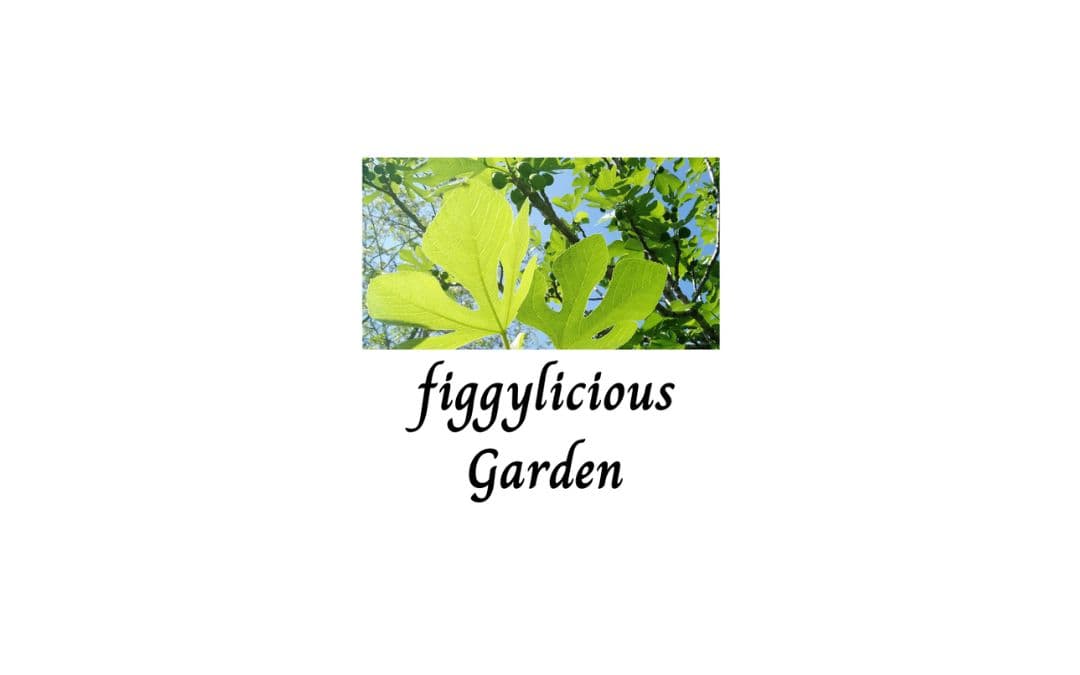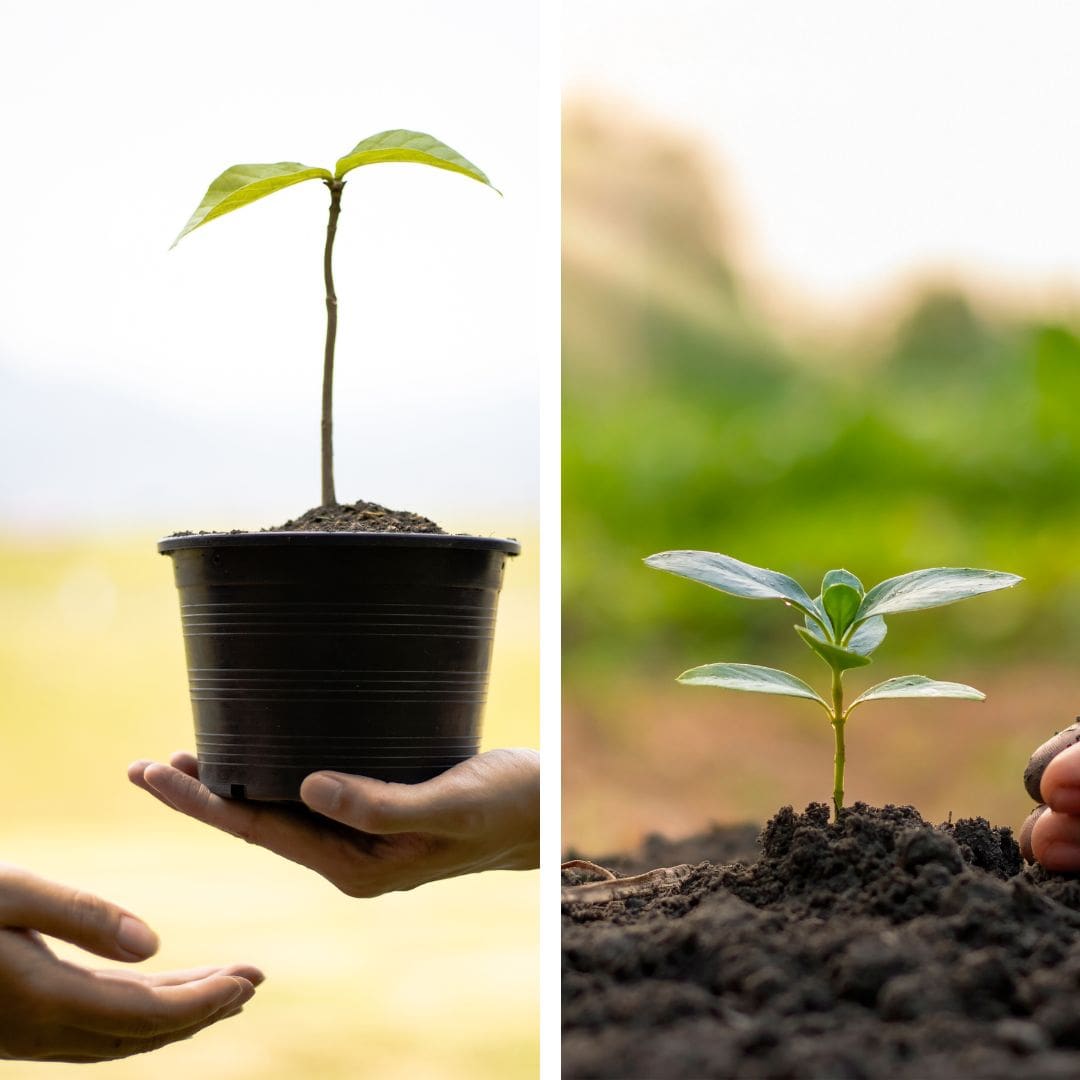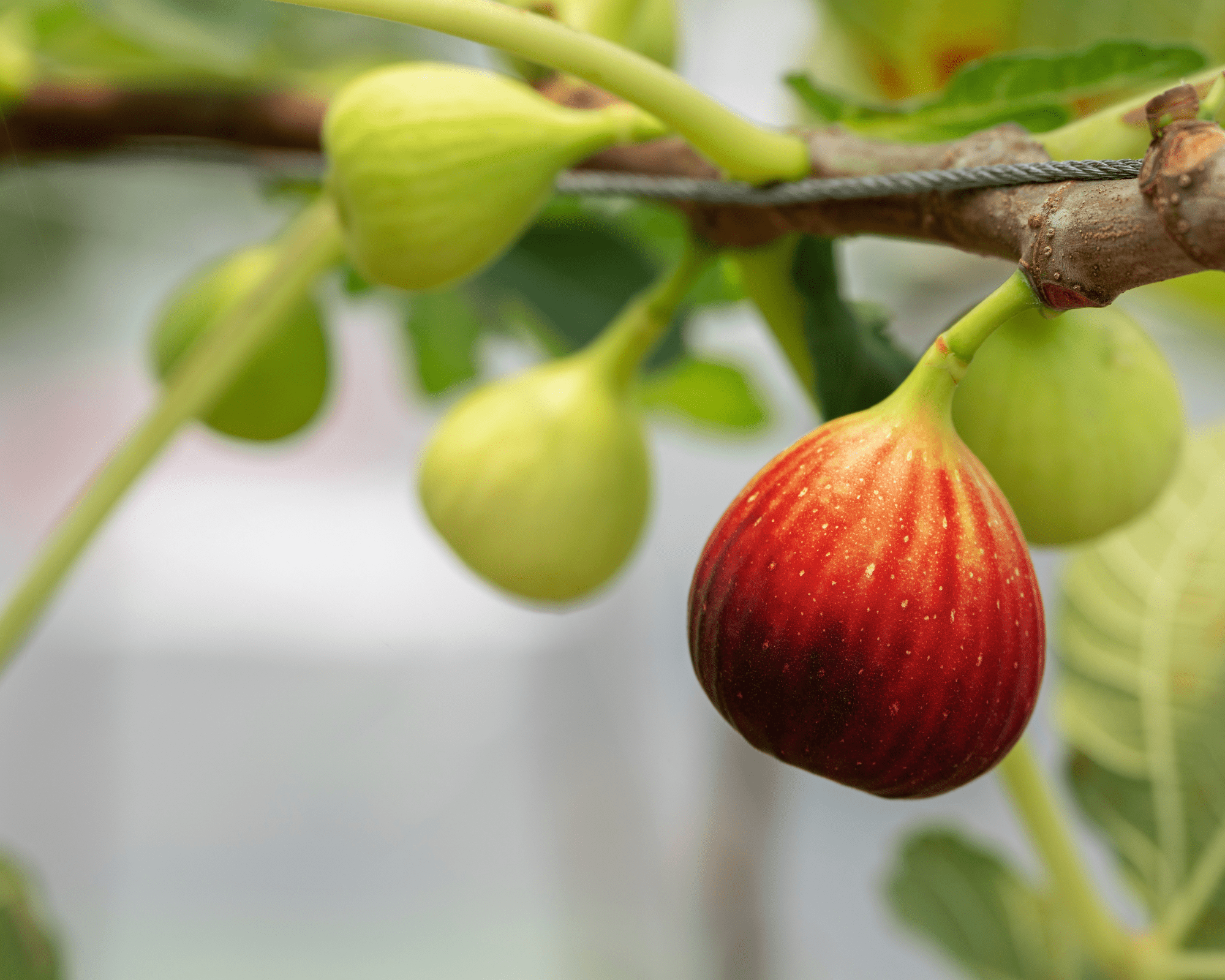Please read the full disclosure for more info. 💚
Potted figs versus inground figs, what’s the caring difference?
When it comes to growing figs, whether you’re a beginner or a seasoned gardener, the question often arises: should I grow figs in pots or plant them directly in the ground? Both potted figs and inground figs have their unique advantages and challenges, and understanding these differences is key to growing a thriving fig tree in your garden. In this post, we’ll compare potted figs versus inground figs, covering everything from care requirements to space considerations, and help you decide which option is best for you.
Potted Figs: Ideal for Small Spaces and Flexibility
Advantages of Growing Figs in Pots:
Space-Saving for Small Gardens:
One of the main advantages of growing figs in pots is the ability to grow them in limited space. If you have a small yard, a balcony, or a terrace, pots offer a perfect solution. You can even grow potted figs indoors during the colder months to extend their growing season.
Mobility and Flexibility:
Potted figs allow you to move the tree around. This mobility is especially helpful when you need to protect the tree from harsh weather conditions or pests. For instance, during the winter, you can bring your fig tree indoors to protect it from frost, or move it to a sunnier spot to encourage better fruit production.
Better Control Over Soil and Drainage:
When figs are grown in pots, you have more control over the soil’s quality and drainage. Poor soil or excessive moisture can stunt the growth of inground trees, but in pots, you can ensure the right soil mix that provides adequate drainage. This is particularly important for fig trees, as they dislike “wet feet” and need well-draining soil to thrive.
Challenges of Growing Figs in Pots:
Limited Root Space:
A major downside of growing figs in pots is the limited root space. While figs can tolerate being in pots for a few years, their roots will eventually outgrow the container. This can lead to root binding, stunted growth, and reduced fruit production. Regular repotting every couple of years is necessary to prevent this issue.
Watering Needs:
Potted figs generally require more frequent watering than inground trees. Since the soil in pots can dry out faster, you’ll need to monitor moisture levels closely. Overwatering can lead to root rot, while underwatering can cause dehydration and stress to the tree.
Frost Sensitivity:
While potted figs can be moved indoors to avoid frost, they are more sensitive to temperature fluctuations. The roots in a pot are more vulnerable to freezing in cold temperatures, especially if they’re left outdoors in winter. During the colder months, proper insulation or bringing the tree inside is a must.
Inground Figs: Perfect for Long-Term Growth and Larger Yields
Advantages of Growing Figs In the Ground:
Larger Growth Potential:
Inground figs have the advantage of unrestricted root growth, which allows them to grow larger and healthier. The deeper soil and space provide room for the roots to expand, leading to a more robust tree with better overall health. This can result in larger, more abundant crops.
Less Frequent Watering:
Figs planted in the ground typically require less frequent watering than those in pots, as the surrounding soil retains moisture longer. Additionally, the fig tree’s root system can better access water deeper in the soil, reducing the need for constant monitoring and irrigation.
Natural Habitat:
Figs naturally grow in the ground, and their long-term health and fruiting potential are best supported by being planted in soil. An inground fig tree will usually be more resilient, able to withstand a variety of environmental factors, and require less constant care compared to a potted one.
Challenges of Growing Figs In the Ground:
Space Requirements:
If you don’t have a lot of space, growing figs inground may not be the best option. Fig trees can spread out significantly, and depending on the variety, they can become quite large. You’ll need to ensure your garden has enough room for the tree to grow without being overcrowded by other plants.
Vulnerable to Pests and Diseases:
Inground figs are more exposed to pests, diseases, and environmental stressors compared to potted figs. Common fig pests, such as aphids, whiteflies, and root-knot nematodes, can damage the tree. Additionally, overexposure to soilborne diseases can lead to root rot or fungal infections, especially in wet climates.
Less Control Over Soil Quality:
Unlike with potted figs, you have less control over the soil quality when growing figs inground. If the soil is too heavy or compacted, it could lead to poor drainage and root problems. To improve soil conditions, you may need to amend the soil with compost or sand before planting your fig tree.
Key Differences: Potted Figs vs. Inground Figs
Potted Figs Inground Figs
Space Requirements: Ideal for small spaces Requires significant space
Root Growth: Limited root space; may need repotting Unrestricted root growth; larger trees
Mobility: Can be moved around Stationary; difficult to relocate
Watering: Needs More frequent watering Less frequent watering
Temperature: Sensitivity More sensitive to cold; may need Hardier, but still needs protection from extreme frost
Maintenance: Requires repotting every couple of years Less frequent care, but needs good soil and drainage
Pest and Disease Risk Lower risk Higher risk of soilborne pests and diseases
Fruit Production: May produce smaller yields Larger yields with proper care
Which is Best for You?
Choosing between potted figs and inground figs depends largely on your space, climate, and level of commitment. If you’re limited by space or live in a region with harsh winters, potted figs offer a flexible, low-maintenance solution that still allows you to enjoy fresh figs. On the other hand, if you have room to spare and are committed to long-term care, inground figs will likely provide larger, more fruitful harvests.
Ultimately, whether you go with potted figs or inground figs, the key to success is proper care and attention. Both options can thrive with the right conditions, and either can make a wonderful addition to your garden or home.
By understanding the differences in care and growth needs between potted and inground figs, you can make an informed decision that best suits your gardening style. Happy growing!


